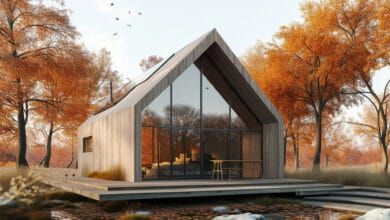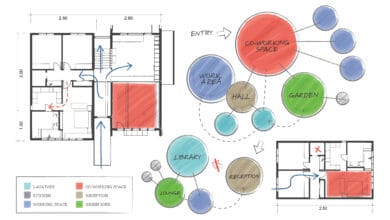The Ultimate Guide: Choosing the Best PC for Architecture

Selecting the best PC for Architecture can be a game changer for productivity and workflow efficiency. Architects and designers need powerful machines capable of handling resource-intensive software like AutoCAD, Revit, and complex 3D rendering tools.
The right computer should provide the muscle to create detailed models, generate realistic renderings, and operate smoothly without lag or crashes. With countless options ranging from budget-friendly systems to high-end workstations, making an informed choice requires understanding key hardware components- CPU, GPU, RAM, and storage- that align with your specific needs and financial plan. Here’s a list of the best PCs to consider for Architectural work.
Choosing the Best PC for Architecture
When it comes to architectural tasks, not all computers are created equal. The best PC will depend on the scale of your projects, the complexity of the software you use, and your budget. A powerful processor (CPU) is critical for multitasking and running demanding applications, while a robust graphics card (GPU) ensures smooth performance in 3D modeling and rendering. Adequate memory (RAM) allows for smooth workflow, especially when handling large projects, while sufficient storage is essential for managing vast amounts of data. By focusing on these components, architects can find a system that optimizes performance without overspending.
Best PC Options for Architectural Design
1. Alienware Aurora R12
The Alienware Aurora R12 is primarily a gaming PC, but its high-end specifications make it suitable for architectural tasks, particularly those requiring high-performance graphics processing and rendering.
- Processor: Intel Core i9-11900KF (up to 5.3GHz)
- Graphics: NVIDIA GeForce RTX 3090
- Memory: Up to 128GB DDR4 RAM
- Storage: Up to 4TB SSD
2. HP Z2 Mini G5
The HP Z2 Mini G5 is a compact yet powerful workstation for professional use. Despite its small size, it provides excellent performance for CAD, 3D modeling, and other Architecture-related tasks.
- Processor: Intel Core i7-10700 (up to 4.8GHz)
- Graphics: NVIDIA Quadro RTX 3000
- Memory: Up to 64GB DDR4 RAM
- Storage: Up to 2TB SSD
3. Lenovo ThinkStation P620
The Lenovo ThinkStation P620 is the first workstation powered by AMD’s Threadripper PRO. It provides massive multi-threaded performance suitable for rendering, simulation, and large-scale CAD tasks.
- Processor: AMD Ryzen Threadripper PRO 3995WX (64 cores, up to 4.2GHz)
- Graphics: NVIDIA Quadro RTX 8000
- Memory: Up to 512GB DDR4 ECC RAM
- Storage: Up to 20TB (supports M.2 NVMe SSDs)
4. Razer Blade 15 Studio Edition
The Razer Blade 15 Studio Edition is a powerful laptop for creative professionals. It is portable, powerful, and features a 4K OLED display, making it the best PC for Architecture and designers on the go
- Processor: Intel Core i7-10875H (up to 5.1GHz)
- Graphics: NVIDIA Quadro RTX 5000
- Memory: 32GB DDR4 RAM
- Storage: 1TB SSD
5. HP Z8 G4 workstation
The HP Z8 G4 is one of the most powerful workstations available. It is capable of handling even the most demanding architectural software and rendering tasks with ease. It provides unparalleled performance, with dual CPUs and high-end graphics.
- Processor: Dual Intel Xeon Gold 6244 (up to 3.6GHz)
- Graphics: NVIDIA Quadro RTX 6000
- Memory: Up to 3TB DDR4 RAM
- Storage: Up to 48TB (supports RAID configurations)

6. Acer ConceptD 900
The Acer ConceptD 900 is intended for creative professionals and provides extreme performance with dual Xeon processors and high quality graphics, making it ideal for rendering BIM and complex architectural projects.
- Processor: Dual Intel Xeon Gold 6148 (up to 2.4GHz, 40 cores)
- Graphics: NVIDIA Quadro RTX 6000
- Memory: Up to 192GB DDR4 ECC RAM
- Storage: Up to 60TB (supports multiple RAID configurations)
7. Dell Precision 5820 Tower
Dell’s Precision 5820 is a powerhouse designed for heavy-duty tasks like 3D rendering, simulation, and complex CAD operations. It is highly customizable, making it suitable for diverse architectural workflows.
- Processor: Intel Xeon W-2225 (up to 4.6GHz)
- Graphics: NVIDIA Quadro RTX 4000
- Memory: Up to 256GB DDR4 RAM
- Storage: Up to 28TB (configurable with SSDs and HDDs)
8. Corsair One Pro i200
The Corsair One Pro i200 is a small yet powerful workstation. It’s the best PC for Architecture requiring advanced processing and graphics capabilities and has limited desk space.
- Processor: Intel Core i9-10940X (up to 4.6GHz)
- Graphics: NVIDIA GeForce RTX 2080 Ti
- Memory: 64GB DDR4 RAM
- Storage: 2TB SSD + 2TB HDD
9. Apple Mac Pro (2019)
The Apple Mac Pro is a superior quality option for architects who prefer macOS. It’s extremely powerful, with options to tailor it to the most demanding architectural applications, particularly 3D rendering and virtual reality.
- Processor: Intel Xeon W (up to 28 cores)
- Graphics: Dual AMD Radeon Pro Vega II Duo (up to 128GB HBM2 memory)
- Memory: Up to 1.5TB DDR4 ECC RAM
- Storage: Up to 8TB SSD
10. Microsoft Surface Studio 2
The Surface Studio 2 is an all-in-one PC with a stunning 28-inch PixelSense display. It’s ideal for creative professionals and architects who require a high-quality display for design projects and presentations.
- Processor: Intel Core i7-7820HQ (up to 3.9GHz)
- Graphics: NVIDIA GeForce GTX 1070
- Memory: 32GB DDR4 RAM
- Storage: 2TB SSD
Conclusion
The best PC for Architecture includes several factors, including processing power, graphics capability, memory, storage space, and display quality. Architects require powerful machines to run complex software such as AutoCAD, Revit, Rhino, and 3D rendering tools. Whether you work for a large firm, a small studio, or as a freelance architect, these options offer various options to meet different workflows and budget constraints.



